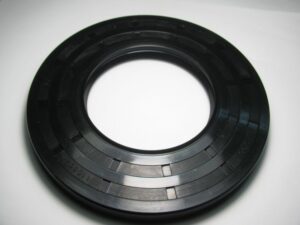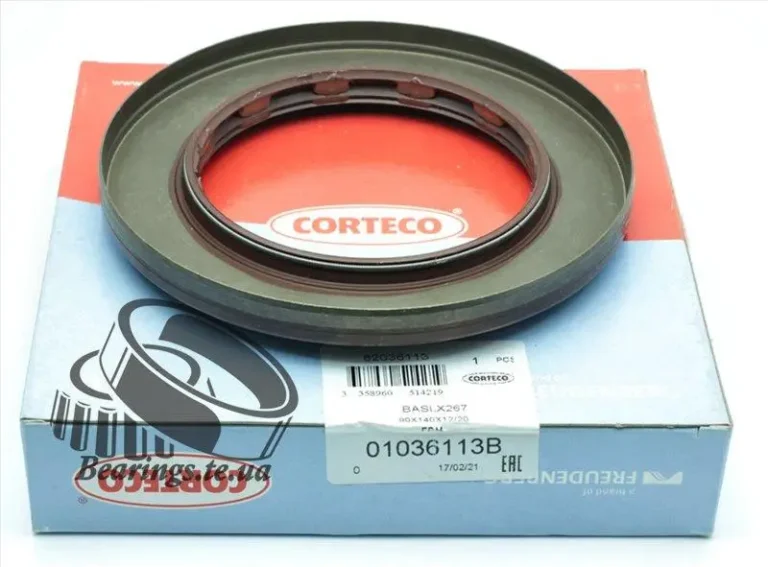Introduction to the 20-14368 Seal
The 20-14368 seal is a critical component widely utilized in various industrial applications, serving to ensure the integrity and performance of machinery and equipment. This seal is designed to prevent fluid leakage, protect against contaminants, and maintain optimal operational efficiency. Characterized by its simplicity and effectiveness, the 20-14368 seal boasts several specifications that make it a favored choice across multiple sectors.
Manufactured from high-quality materials such as rubber, silicone, or polyurethane, the 20-14368 seal can withstand a range of temperatures and pressures, enhancing its durability and longevity. These materials are chosen based on the specific requirements of the application, ensuring that the seal performs reliably in its intended environment. Furthermore, the seal can be categorized into various types, including O-rings, lip seals, and flat seals, each tailored to meet specific sealing challenges.
The significance of the 20-14368 seal extends across diverse industries, including automotive, aerospace, and manufacturing. In the automotive sector, for example, the seal plays a pivotal role in engine assembly, where it is essential for preventing oil and coolant leaks. Similarly, in the aerospace industry, the seal is crucial for maintaining pressure integrity in aircraft systems. Additionally, the manufacturing industry relies on the 20-14368 seal to ensure the smooth operation of machinery, ultimately enhancing productivity and reducing maintenance costs.
By understanding the characteristics and applications of the 20-14368 seal, one can appreciate its importance in maintaining operational resilience and functionality across various systems. This foundational knowledge sets the stage for exploring its maintenance practices and potential advancements in sealing technology.
Applications of the 20-14368 Seal
The 20-14368 seal is crucial in various industries, including automotive, aerospace, and manufacturing, due to its ability to enhance the efficiency and reliability of machinery and equipment. In the automotive sector, the seal is commonly employed in engine applications, where it helps prevent the leakage of fluids and maintain optimal performance. Its durable material withstands high temperatures and pressures, ensuring that automotive components function smoothly under demanding conditions.

In the aerospace industry, the importance of the 20-14368 seal cannot be overstated. It is used in critical applications such as fuel systems, hydraulic systems, and airframe assemblies. The ability of the seal to maintain integrity even in extreme conditions of altitude and temperature is vital for ensuring the safety and reliability of aircraft operations. For instance, in a notable case study involving a major aircraft manufacturer, the implementation of the 20-14368 seal in hydraulic systems significantly reduced maintenance costs and downtime, showcasing its efficacy in demanding environments.
Moreover, the manufacturing sector benefits from the versatility of the 20-14368 seal in various machinery and equipment. It is utilized in conveyor systems, pumps, and other equipment where preventing leaks is essential for operational efficiency. A practical example can be observed in a factory setting where the incorporation of this seal led to a marked increase in productivity by preventing fluid loss and minimizing the frequent need for repairs. As manufacturing processes continue to evolve, the reliance on effective seals like the 20-14368 contributes significantly to larger-scale operational success.
Across these diverse applications, the 20-14368 seal stands out as a vital component that aids in the functionality and lifespan of equipment, demonstrating its critical role in modern industrial applications.
Maintenance and Best Practices for the 20-14368 Seal
Proper maintenance of the 20-14368 seal is crucial for ensuring its longevity and optimal performance in various applications. Routine inspections are a fundamental aspect of maintenance, as they help identify potential issues before they escalate. It is recommended to establish a regular inspection schedule, particularly in environments where the seal is subjected to varying temperature and pressure conditions. During inspections, look for signs of wear, such as cracks, abrasions, or deformation, which could compromise the seal’s integrity.
Common issues associated with the 20-14368 seal generally stem from improper installation or environmental factors. For instance, if the seal is installed in an area with excessive vibration, it may wear out more quickly than anticipated. Ensuring that the installation environment is consistent with the manufacturer’s specifications can mitigate these risks. Additionally, it is essential to verify that any surfaces in contact with the seal are smooth and clean, as contaminants can accelerate wear or lead to premature seal failure.
Another best practice involves using appropriate lubricants, if recommended. Applying the right lubricant can facilitate smoother operation and extend the life of the 20-14368 seal. Nevertheless, avoid over-lubrication, as excessive lubricant may collect dirt and debris, potentially harming the seal’s performance. During replacement or installation, following the manufacturer’s guidelines meticulously is vital to minimize the occurrence of operational failures. Ensure that proper tools and techniques are utilized to adhere to specifications, and consider the environment in which the seal will operate.
In conclusion, maintaining the 20-14368 seal through routine inspections, proper installation techniques, and adherence to manufacturer guidelines plays an integral role in its functional durability. Educating operators about these best practices fosters a proactive approach towards enhancing operational sustainability and reducing downtime due to seal-related failures.
Future Developments and Innovations in Seal Technology
As industries continue to evolve, the future of seal technology, particularly the 20-14368 seal, is poised for significant advancements. Emerging materials and innovative manufacturing techniques are at the forefront of research and development in this field, promising enhanced performance and greater efficiency. Recent trends indicate a shift towards utilizing advanced polymers and composite materials that can offer superior resistance to wear, temperature fluctuations, and chemical exposure, thus extending the lifespan of seals like the 20-14368 seal.
Moreover, advancements in 3D printing technology are opening new avenues for the production of seals. This revolutionary method allows for the creation of complex geometries and customized seal designs tailored to specific applications. By employing 3D printing, manufacturers can reduce production waste and lead times while maintaining high precision in seal dimensions. This capability is especially advantageous for industries requiring bespoke solutions that traditional manufacturing methods may struggle to provide.
In addition to new materials and production techniques, the integration of smart technologies into seal design is another promising development. Smart seals equipped with sensors could provide real-time monitoring of seal integrity, enabling predictive maintenance and minimizing downtime. This innovation would not only enhance the reliability of seals like the 20-14368 seal but also facilitate data collection on performance metrics that could drive further improvements in design and material selection.
Research into self-healing materials is also gaining momentum, where materials can autonomously repair minor damage, thereby enhancing durability and effectiveness. These materials could significantly benefit applications with high mechanical stress or exposure to harsh environments, where traditional seals may fail. Collectively, these innovations reflect a clear trend towards more resilient, efficient, and adaptable sealing technologies that meet the growing demands of modern industries.
